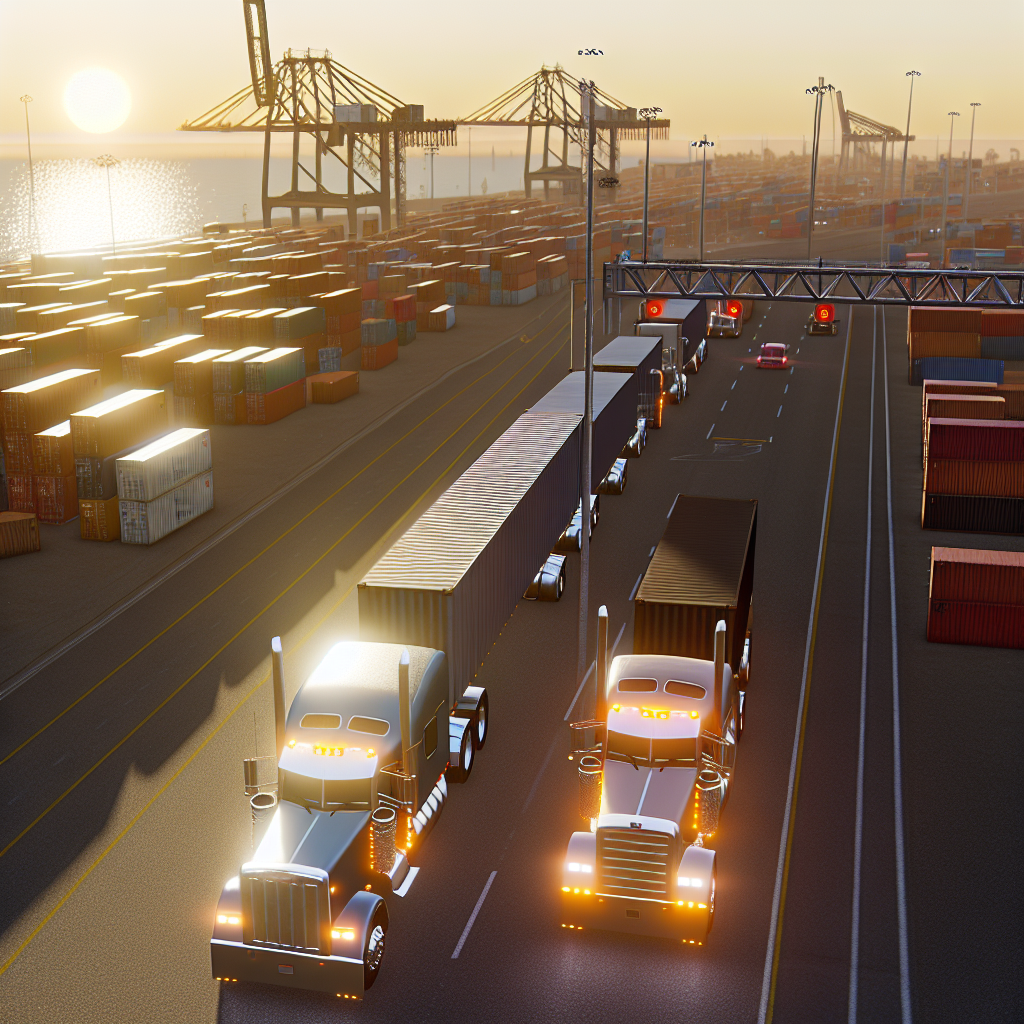China will begin charging American-linked vessels new port fees on Tuesday, October 14, escalating a maritime standoff that now threatens U.S. landside logistics. The Ministry of Transport said ships that are U.S.-owned, operated, built or flagged will be assessed 400 yuan (about $56) per net ton per voyage, with charges capped at five calls per vessel each year and rising annually to 1,120 yuan (about $157) by 2028. Beijing framed the move as a direct response to Washington’s plan to levy fees on China-connected ships calling at U.S. ports.
On the U.S. side, a phased fee regime begins the same day: Chinese-owned or -operated vessels face $50 per net ton per voyage, stepping up each year through 2028. In a related update on October 11, U.S. trade officials also set a specific rate for foreign-built vehicle carriers at $46 per net ton and signaled new 100% tariffs on certain Chinese-made ship-to-shore cranes and some truck cargo-handling equipment, while choosing not to tax intermodal containers to avoid collateral damage to domestic logistics.
The brinkmanship widened Friday after fresh warnings from Washington about a potential “massive increase” in tariffs on Chinese goods, underscoring how quickly maritime measures are bleeding into broader trade policy — and, by extension, freight demand. Markets registered nerves on the headline risk, but for supply chains the immediate question is operational, not macro.
For ocean carriers, the cleanest way to blunt port fees is to reconfigure rotations. Analysts say some lines have already been repositioning assets ahead of the October 14 start date — a tactical shift that often concentrates calls at the biggest, most efficient gateways while trimming smaller port calls. When that happens, cargo volume bunches up at a few hubs, and the stress moves inland to drayage, transload, and long-haul trucking.
What truckers should watch: first, denser ship calls in Southern California and the New York–New Jersey complex can quickly translate into longer turn times and tougher appointment slots, especially if chassis pools and empty returns lag the surge. That raises the risk of detention and demurrage — costs that hit motor carriers when pickup windows slip. If carriers reduce direct calls to secondary ports, expect more hinterland freight to be funneled through the big gateways, inflating both dray miles and transload demand before moves into the interior on truckload or rail.
Second, cross-border pivots. If some Asia–U.S. services steer a portion of calls to Vancouver/Prince Rupert or Mexican Pacific ports to ease U.S. fee exposure, expect added opportunities — and congestion — at northern and southern land ports as containers move by rail and then shift to truck for final delivery. That can mean new contract lanes but also more variability in dwell and handoff timing. Consider staging capacity in border markets and reviewing customs brokerage coverage to shorten clearance cycles.
Third, sector-specific swings. The U.S. just set a dedicated rate for foreign-built car carriers, which puts a predictable surcharge into the inbound automotive pipeline. That cost pressure tends to ripple into finished-vehicle distribution and inbound parts flows — both heavy users of dedicated and expedited trucking. Meanwhile, exemptions and reversals around LNG/ethane/LPG carriage reduce uncertainty for Gulf Coast energy and chemicals exporters, stabilizing associated dray and tank-truck activity that feeds those export supply chains.
Pricing is the wild card. Even if headline ocean rates don’t jump immediately, both countries’ fee schedules escalate every year through 2028. Ocean carriers will attempt to recover new costs through surcharges, which often cascade into higher BCO logistics budgets and, ultimately, carrier pay terms and accessorial scrutiny. Trucking firms should prepare for tighter bid cycles, more frequent mini-bids, and requests to hold rates amid volatile port productivity.
Action items for fleets and shippers of choice: audit drayage turn-time data at key terminals now; pre-negotiate contingency windows and free-time allowances with customers; secure supplemental chassis access; stage drop equipment near high-risk ramps and transload hubs; and line up cross-border capacity with customs-ready partners in case flows tilt through Canada or Mexico. If you manage auto, retail, or seasonal imports, build buffer days into DC receiving calendars and synchronize transload providers with appointment-setters to contain wait-time exposure.
Bottom line: this is less about a single new fee and more about an iterative policy duel that can rearrange where, when, and how boxes hit the U.S. pavement. Trucking will feel it first in yard queues and schedule volatility — the places where minutes, not headlines, determine margins.
Sources: FreightWaves, Reuters, The Associated Press, MarineLink, AJOT
This article was prepared exclusively for TruckStopInsider.com. Republishing is permitted only with proper credit and a link back to the original source.





